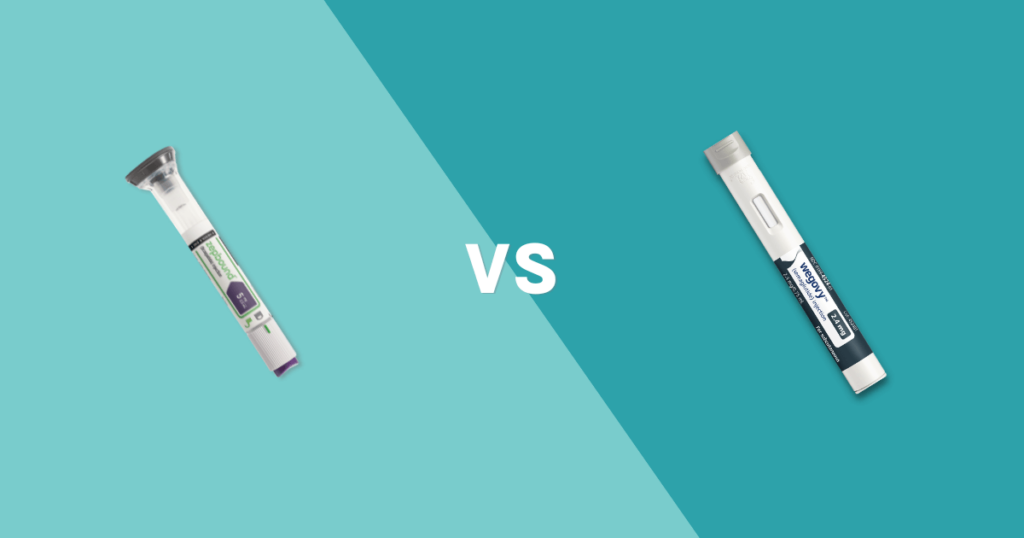With obesity rates soaring despite vapid fad diets and fleeting exercise enthusiasms typically faltering to deliver sustainable solutions, novel pharmaceutical interventions leveraging endogenous biology offer new hope for establishing fresh, reduced-weight equilibriums through convenient injections.
But when evaluating the two foremost FDA-approved medications – semaglutide (Wegovy) and tirzepatide (Mounjaro) – appreciable differences emerge regarding long-term weight loss maintenance trajectories based on divergent receptor targeting and lingering metabolic effects.
This guide shows difference between wegvoy and mounjaro the rival GLP-1 analogues over multi-year timeframes spanning early loss through upkeep of trimmed-down results.
Mechanisms of Action: GLP-1 Receptor Agonism
Despite differing chemical structures, both Wegovy and Mounjaro activate GLP-1 receptor sites abundant within digestive organs and the central nervous system, enacting weight reduction through:
- Slowing gastric emptying
- Stimulating insulin in response to meals
- Blunting excessive post-meal glucagon secretion
- Signaling satiety via hypothalamic neurons
These synchronized effects curb caloric intake while optimizing glycemic regulation – a biochemical 1-2 punch generating adipose-assaulting conditions in overweight individuals.
Clinical Trial Design Parameters
But while parallels exist regarding general mechanisms, analyzing maintenance data from large registrational trials reveals divergence in durability timelines:
| Metric | Wegovy Trial | Mounjaro Trial |
| Total Subjects | 1961 | 2235 |
| Duration | 68 weeks (1.3 years) | 56 weeks (1 year) with 28 week control period |
| Dosing Schedule | 20 weeks weight loss + 48 weeks weight maintenance | 16 weeks weight loss + 28 weeks randomized weight maintenance |
The additional year within the Wegovy SCALE trial allows superior appraisal of sustained effects from semaglutide’s impact once initial losses stabilize.
Principal Weight Maintenance Results
Despite comparable ~15% nadirs after approximately 4 months, regression tendencies markedly differed during preservation phases:
- Wegovy cohort retained >15% mean reduction at 68 weeks
- Mounjaro group converged to ~10% losses by week 56
The above suggests substantially greater weight maintenance durability conferred by semaglutide over the longer term – likely attributable to sustained GLP-1 and PYY elevations continually suppressing appetite drives.
Key Variables Influencing Durability
While the central tendencies reliably demonstrate Wegovy’s superior weight maintenance persistence, individual responses subject to variables like:
- Genetics – Response heterogeneity
- Adherence – Both medication and continued lifestyle behaviors
- Comorbidities – Compounding or orthogonal conditions
Nevertheless, in the same trial conditions with equivalent multi-disciplinary support, semaglutide clearly delivers more sticking power helping stymie rebound.

Fat Cell Dynamics May Explain Persistence
Emerging research into adipocyte metabolic memory Indicates GLP-1 drugs reprogram fat cells, imparting lasting epigenetic shifts influencing gene expression, glucose transporters, lipolysis enzymes and additional weight-regulatory modalities – possibly conveying durable effects.
So for those seeking lasting losses rather than transient trimming, the long-term trial data suggests Wegovy may confer superior sustainability through coordinated biological action setting lower weight equilibriums.
Yet staying vigilant with lifestyle behaviors while adhering to treatment regimes remains essential for harnessing pharmacology’s full potential!
FAQs
Does Mounjaro work for type 2 diabetes like Wegovy?
Yes, Mounjaro received FDA approval for treating type 2 diabetes at lower dosing levels, similar to how Wegovy’s sister drug Ozempic is used. So both medications demonstrate A1c-lowering capabilities, though Wegovy is specifically indicated for weight management.
Which causes more GI side effects: Wegovy or Mounjaro?
GI issues like nausea, vomiting and diarrhea commonly afflict both early on. However, Mounjaro’s dual mechanisms tend to provoke slightly greater rates of moderate-to-severe gastrointestinal distress during the initial dosing period before tolerance develops.
Can Mounjaro and Wegovy be combined or is that dangerous?
No studies have evaluated concurrently co-administering semaglutide and tirzepatide. GLP-1 receptor analogues already confer significant side effects alone before acclimation. Attempting combination therapy without medical guidance risks amplified issues with questionable added benefit and should be avoided.
Why can’t Mounjaro maintain weight loss as well as Wegovy?
Mounjaro dips slightly lower initially through augmented metabolic action but struggles to sustain downward momentum long-term possibly due to inadequate sustaining of key satiety hormone levels. The precise mechanisms behind Wegovy’s superior weight maintenance remain unclear but may involve adipocyte modulation.


